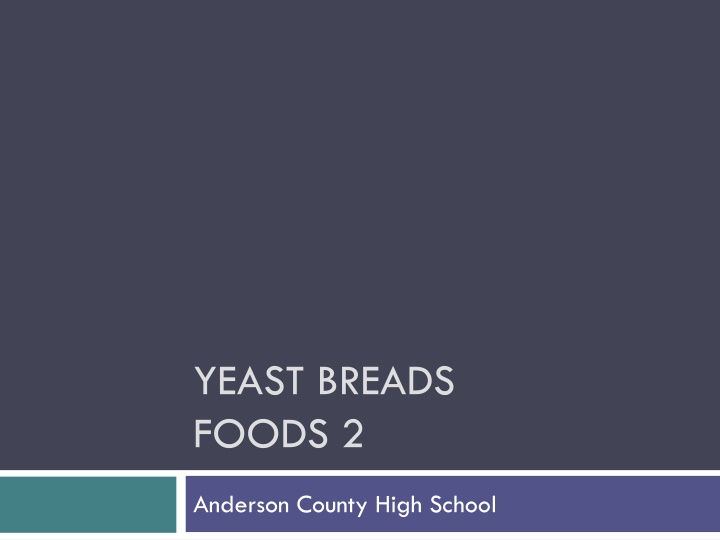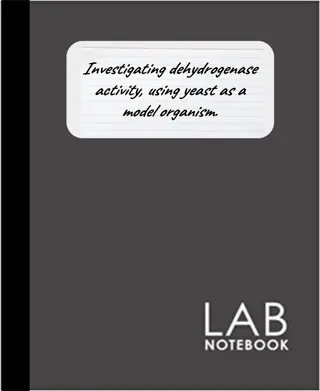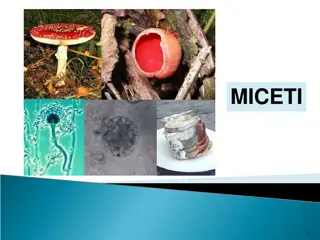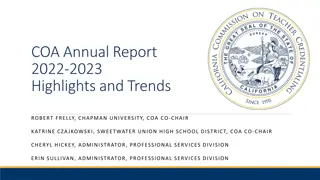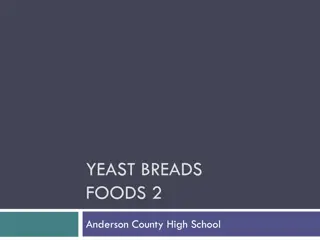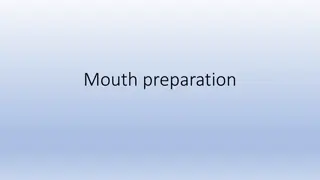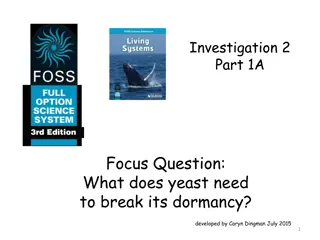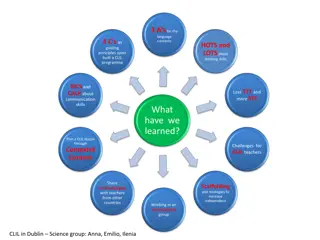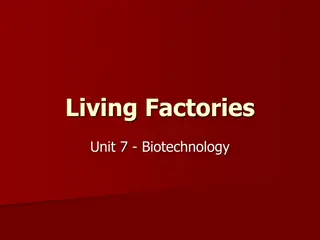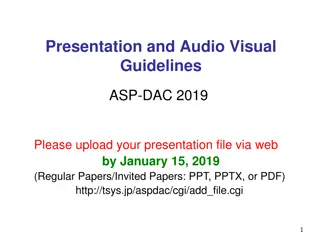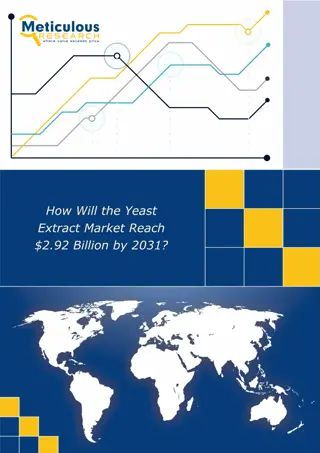Yeast Breads Preparation Guide
Explore the world of yeast breads with essential information on yeast, ingredients, terms to know, mixing methods, and baking tips for successful bread making. Learn about the role of yeast as a microscopic plant and the key ingredients needed to create delicious bread. Discover important techniques like kneading, fermentation, and shaping, along with how to test for doneness and properly care for your homemade bread. Master the art of creating various bread shapes and styles while understanding the importance of temperature control and proper handling throughout the baking process.
Download Presentation

Please find below an Image/Link to download the presentation.
The content on the website is provided AS IS for your information and personal use only. It may not be sold, licensed, or shared on other websites without obtaining consent from the author.If you encounter any issues during the download, it is possible that the publisher has removed the file from their server.
You are allowed to download the files provided on this website for personal or commercial use, subject to the condition that they are used lawfully. All files are the property of their respective owners.
The content on the website is provided AS IS for your information and personal use only. It may not be sold, licensed, or shared on other websites without obtaining consent from the author.
E N D
Presentation Transcript
YEAST BREADS FOODS 2 Anderson County High School
What is Yeast? 1. Microscopic Plant 2. Favorite food is sugar 3. carbon dioxide forms as yeast ferments Bakers yeast is a one-celled fungus that multiplies rapidly at the right temperature in the presence of a small amount of sugar and warm moisture.
Ingredients o Flour (structure) o Liquid (moisture) o Yeast (Leavener) o Salt (controls yeast) o Fat (Tenderizer) o Eggs (Color, crust tenderizer) o Sugar (Food)
Terms to know: o Kneading- only add enough flour to keep the dough from becoming sticky. If you add too much it will slow fermentation time, leaving the final product dry and streaked or heavy. o Fermentation (rising)- Placing dough in a covered bowl (helps to maintain humidity and prevent drying) in a humid warm place. The dough will double in size as CO2 is produced by the yeast.
Terms cont. o Punching down- The dough is punched down directly in the bowl with a clenched fist. Evens out temps, redistributes sugars, yeast, gluten, breaks large air bubbles. The bread would have large holes without this step. o Proofing- The final rising that occurs in the pan or on the baking sheet.
Terms cont. o Shaping- Bread can take on a wide variety of shapes: braids, rolls, doughnuts, coffee cake. o Oven spring- Sudden dramatic rise of yeast dough that takes place during the first few minutes of baking. o Test for doneness- The bread should be above 195*. Top should be golden brown. Easy to remove from pan. Tap bottom to hear hollow sound.
Terms cont. o Cooling- Take out of pan and put on a rack. The crust will get soggy if left in the pan. o Care- Most homemade bread can be frozen if sealed. Homemade bread spoils faster than store-bought.
Mixing Methods 1. Standard- Dissolve yeast in water. THEN add milk, sugar, and fat. 2. Rapid mix- Mix yeast with dry ingredients. THEN add liquids. 3. Cool-rise- Mix, knead, and shape. THEN refrigerate to rise. 4. Batter method- No handling or kneading 5. Frozen dough method- Mix and knead, shape into pan, cover and freeze.
Yeast Temperatures 105*-115* o When yeast is dissolved directly into liquid o (standard method) 120*-130* o When un-dissolved yeast is added to dry ingredients. o (Mixer method)
Shaping (See hand-out) http://tbn0.google.com/images?q=tbn:2H0NCVaha4_pWM:http://muerggu.ch/baguette.jpg o Baguette o Couronne rosace http://tbn0.google.com/images?q=tbn:jocjNAEvScDkXM:http://realfoodliving.files.wordpress.com/2008/03/bread-9.jpg o Twist http://tbn0.google.com/images?q=tbn:lPJZ2_agjU63xM:http://farm3.static.flickr.com/2277/2221795776_8d5d66d7e3.jpg o Crescents http://tbn0.google.com/images?q=tbn:xtXzMdGmbHWJNM:http://bp1.blogger.com/_t7DDuKVslM0/RtmpF8uzrxI/AAAAAAAAAp0/k1qy1aUxu7w/s400/100_1624.JPG o Braided loaf http://tbn0.google.com/images?q=tbn:XaJ4aiRCrnyu9M:http://www.stonehousebread.com/products/epi.jpg o Epi
Crust Treatment Egg wash- Gives the crust a super shine. Butter- Less shine but deep golden brown color. Good flavor. Milk- Slightly soft or tender crust, with a dull shine. Toppings- brush the unbaked loaves with egg wash then sprinkle with: - Poppy seeds - Caraway seeds - Oregano - Garlic flakes -sesame seeds -basil - Onion
Slashing For a decorative, professional look: Glaze and slash the top after the dough rises, with a sharp knife. Cut inch into the dough
